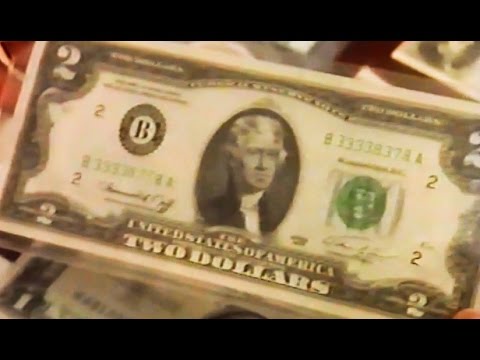more at
“The Money Story. The educational videotape is divided into two parts the history of money and the production of money. It chronicles the progression from the early barter system, to the first coins, and then to the paper currency used today.”
Public domain film from the US National Archives, slightly cropped to remove uneven edges, with the aspect ratio corrected, and mild video noise reduction applied.
The soundtrack was also processed with volume normalization, noise reduction, clipping reduction, and/or equalization (the resulting sound, though not perfect, is far less noisy than the original).
Money is any item or verifiable record that is generally accepted as payment for goods and services and repayment of debts in a particular country or socio-economic context. The main functions of money are distinguished as: a medium of exchange; a unit of account; a store of value; and, perhaps, a standard of deferred payment. Any item or verifiable record that fulfills these functions can be considered money.
Money is historically an emergent market phenomenon establishing a commodity money, but nearly all contemporary money systems are based on fiat money. Fiat money, like any check or note of debt, is without intrinsic use value as a physical commodity. It derives its value by being declared by a government to be legal tender; that is, it must be accepted as a form of payment within the boundaries of the country, for “all debts, public and private”.[citation needed] Such laws in practice cause fiat money to acquire the value of any of the goods and services that it may be traded for within the nation that issues it.
The money supply of a country consists of currency (banknotes and coins) and usually includes bank money (the balance held in checking accounts and savings accounts). Bank money, which consists only of records (mostly computerized in modern banking), forms by far the largest part of broad money in developed countries…
A mint is an industrial facility which manufactures coins for currency.
The history of mints correlates closely with the history of coins. In the beginning, hammered coinage or cast coinage were the chief means of coin minting, with resulting production runs numbering as little as the hundreds or thousands. In modern mints, coin dies are manufactured in large numbers and planchets are made into milled coins by the billions.
With the mass production of currency, the production cost is weighed when minting coins. For example, it costs the United States Mint much less than 25 cents to make a quarter, and the difference in production cost and face value (called seigniorage) helps fund the minting body…
The Bureau of Engraving and Printing (BEP) is a government agency within the United States Department of the Treasury that designs and produces a variety of security products for the United States government, most notable of which is Federal Reserve Notes (paper money) for the Federal Reserve. The Federal Reserve itself is the central bank of the United States of America. In addition to paper currency, the B.E.P. produces Treasury securities; military commissions and award certificates; invitations and admission cards; and many different types of identification cards, forms, and other special security documents for a variety of government agencies. The B.E.P. does not produce coins; all coinage is produced by the United States Mint. With production facilities in Washington, DC, and Fort Worth, Texas, the Bureau of Engraving and Printing is the largest producer of government security documents in the United States…
…in 1957, the Bureau began printing currency via the dry intaglio method that utilizes special paper and non-offset inks, enabling a further increase from 18 to 32 notes per sheet. Since 1968, all currency has been printed by means of the dry intaglio process, whereby wetting of the paper prior to printing is unnecessary. In this process, fine-line engravings are transferred to steel plates from which an impression is made on sheets of distinctive paper. Ink is applied to a plate containing 32 note impressions, which is then wiped clean, leaving ink in the engraved lines. The plate is pressed against the sheet of paper with such pressure as to actually press the paper into the lines of the plate to pick up the ink. Both faces and backs are printed in this manner – backs first. After the faces are printed, the sheets are then typographically overprinted with Treasury Seals and serial numbers.
During the Fiscal Year 2013, the Bureau delivered 6.6 billion notes at an average cost of 10 cents per note…

